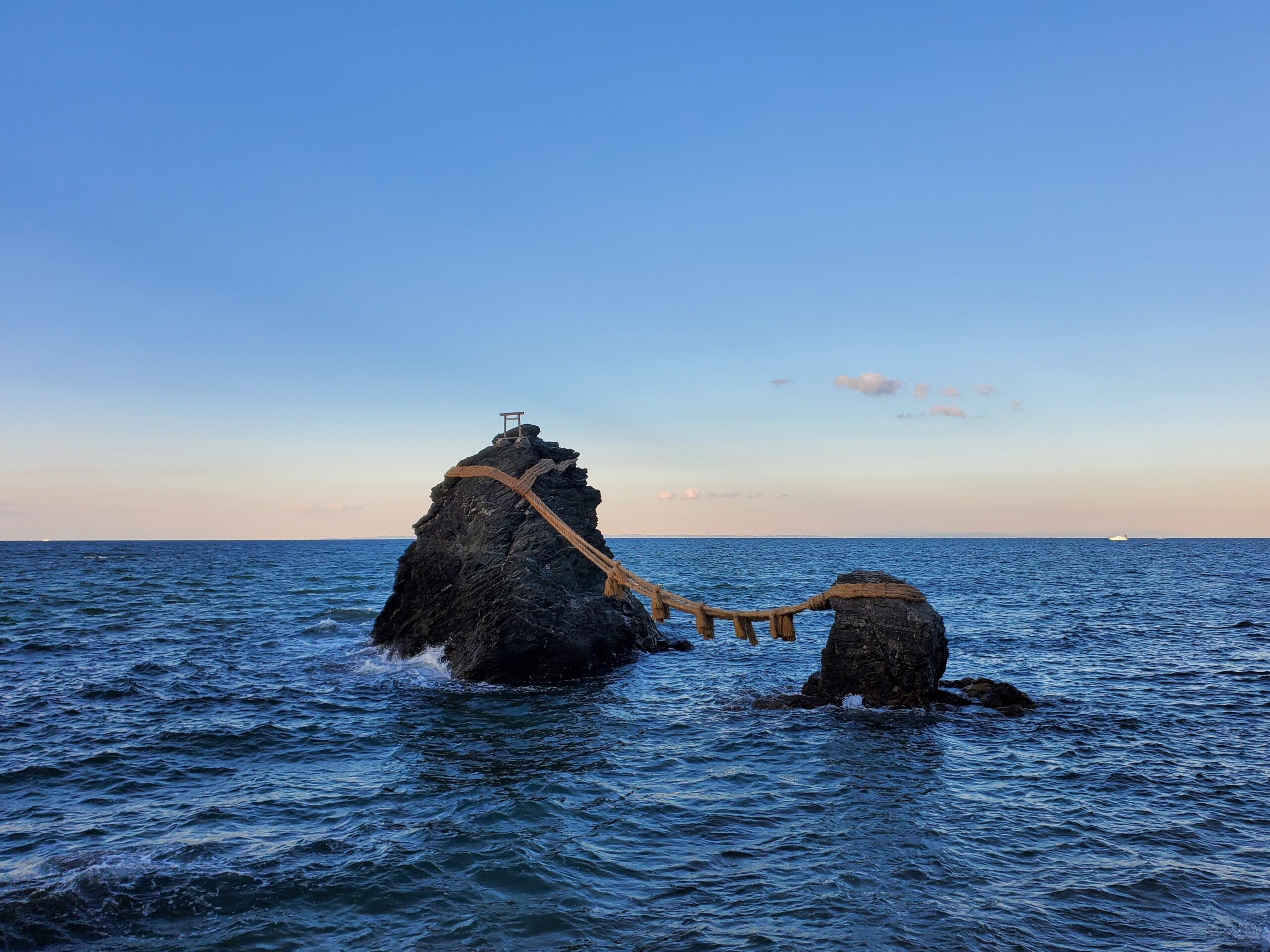After weeks of back-to-back business trips, I finally found a moment to breathe. When I glanced at my calendar, I noticed something rare—a three-day weekend with nothing scheduled. The emptiness felt like an open invitation. It seemed like the perfect time to visit a place I might otherwise never reach.
Ise—that name first came to me while browsing a book on Japanese culture in a Tokyo bookstore. On one page was a photo of a solemn wooden shrine, described simply as “Jingū.” According to the caption, Ise Jingu is a sacred Shinto shrine located in the city of Ise, on the eastern edge of the Kii Peninsula in Mie Prefecture.
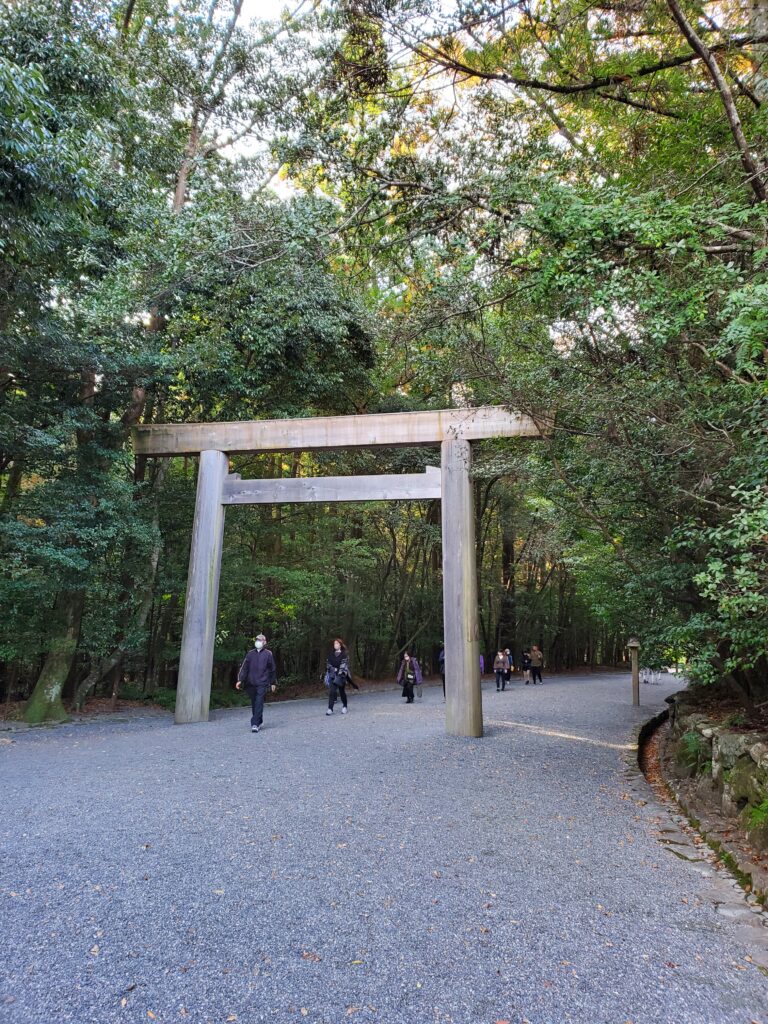
It enshrines Amaterasu-Ōmikami, the sun goddess and one of the most revered deities in Japanese mythology. I couldn’t explain it, but I felt an inexplicable pull toward this place with its two-thousand-year history.
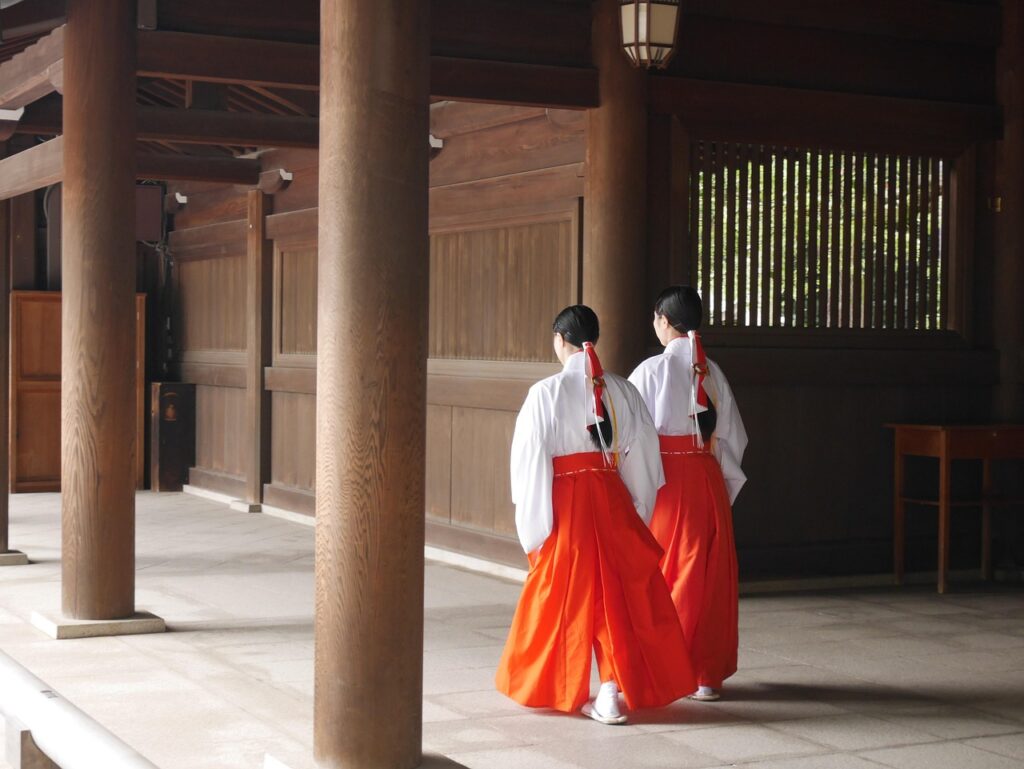
I arrived at Ise City Station in the late afternoon, swaying in my seat on the Kintetsu Limited Express from Nagoya. The sky was crystal clear, and the air had a faint sweetness to it—the crisp scent of autumn brushed softly past my nose.
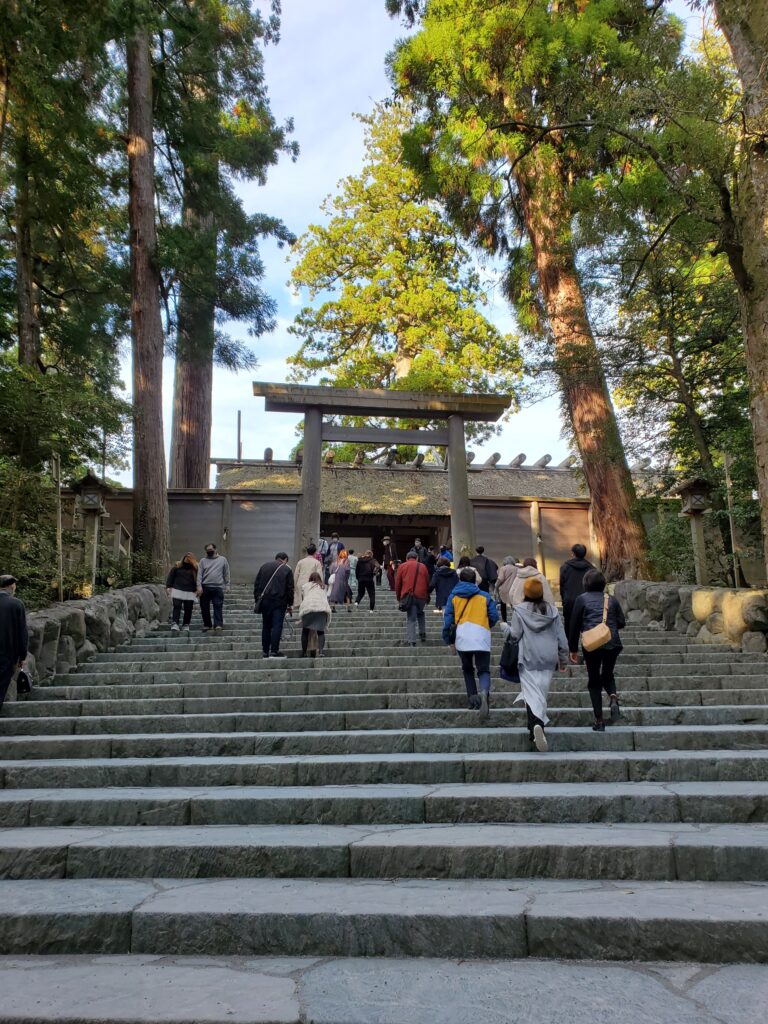
My first stop was Gekū, the Outer Shrine of Ise Jingu. This sacred site is dedicated to Toyouke-Ōmikami, the deity of food, clothing, and shelter. Tradition says one should visit Gekū before heading to Naikū, the Inner Shrine. As I walked down the long path lined with towering trees stretching skyward, I felt the noise of the city gradually fall away, as if gently peeled from my mind.
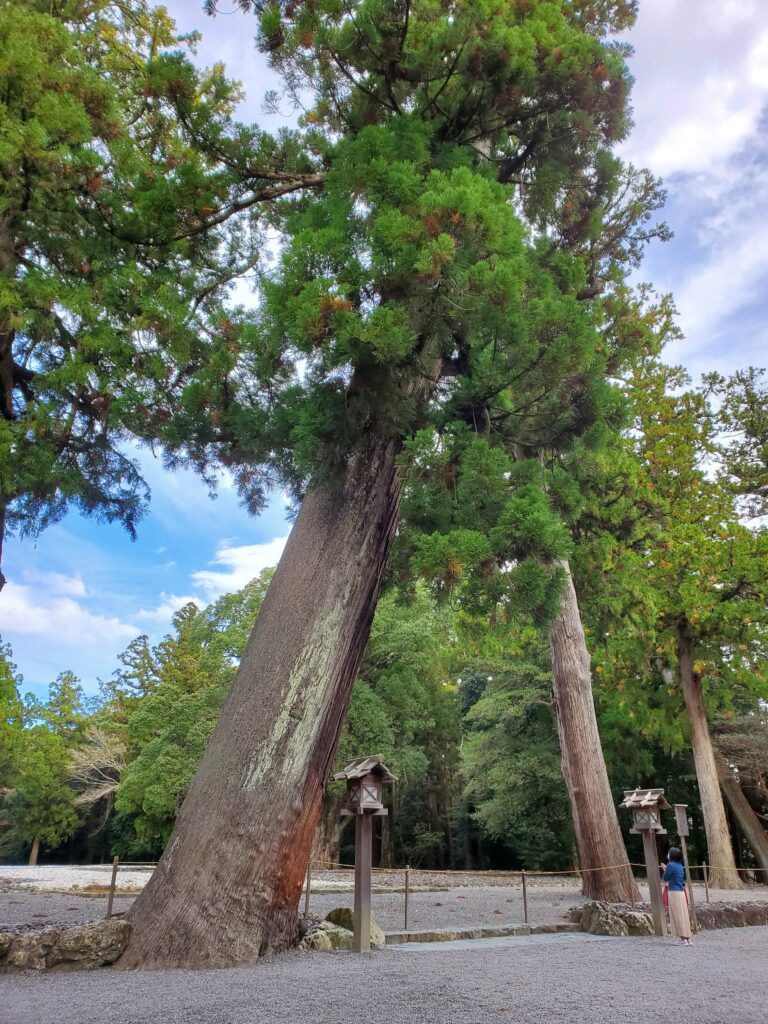
The next morning, I made my way to Naikū, the heart of Ise Jingu. There was a silence there that defied words. As I stepped onto Uji Bridge—the entrance to this vast sacred ground—the world around me transformed. The forest spread wide on either side, bathed in golden hues, and fallen leaves danced gently in the wind as they drifted toward the Isuzu River.
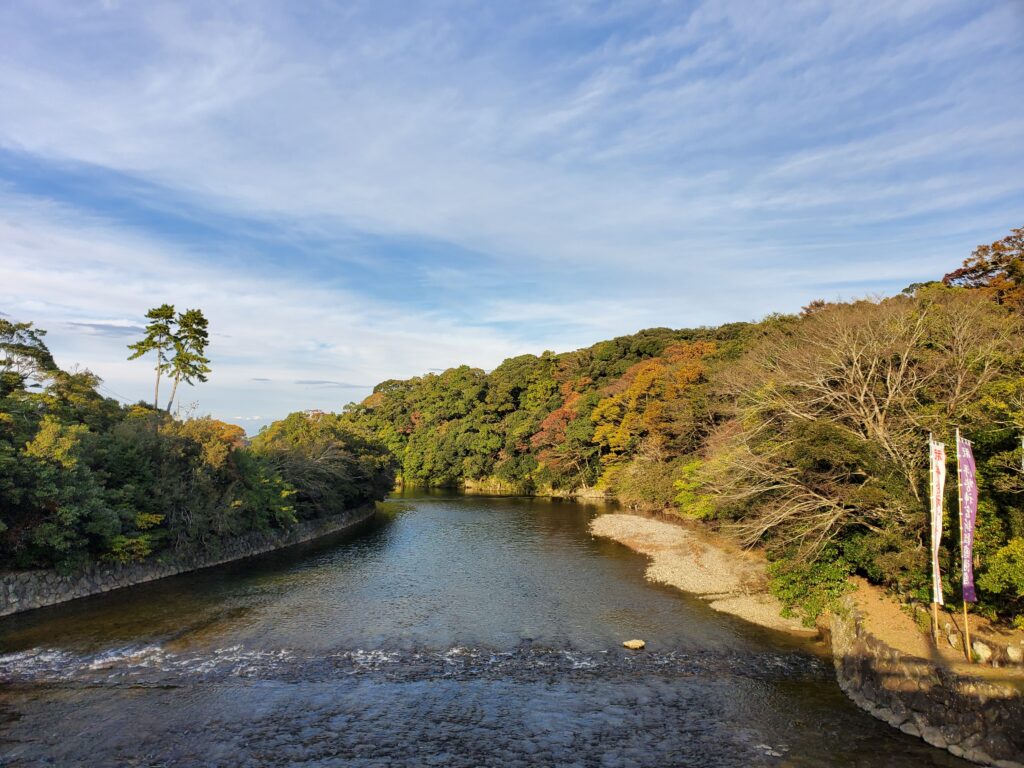
The sound of the river beneath the bridge—it wasn’t just the gentle murmur of water. It felt like the delicate notes of a koto, Japan’s traditional harp. But more than that, it was a sound unlike anything I had ever heard. I was deeply moved that nature could create something so beautiful, so tender. The more I listened, the more it seeped into my heart, as though it were telling me, “You’re okay just as you are.” It was the kind of sound I could listen to forever—soft, soul-soothing, wrapping around me like a quiet embrace.
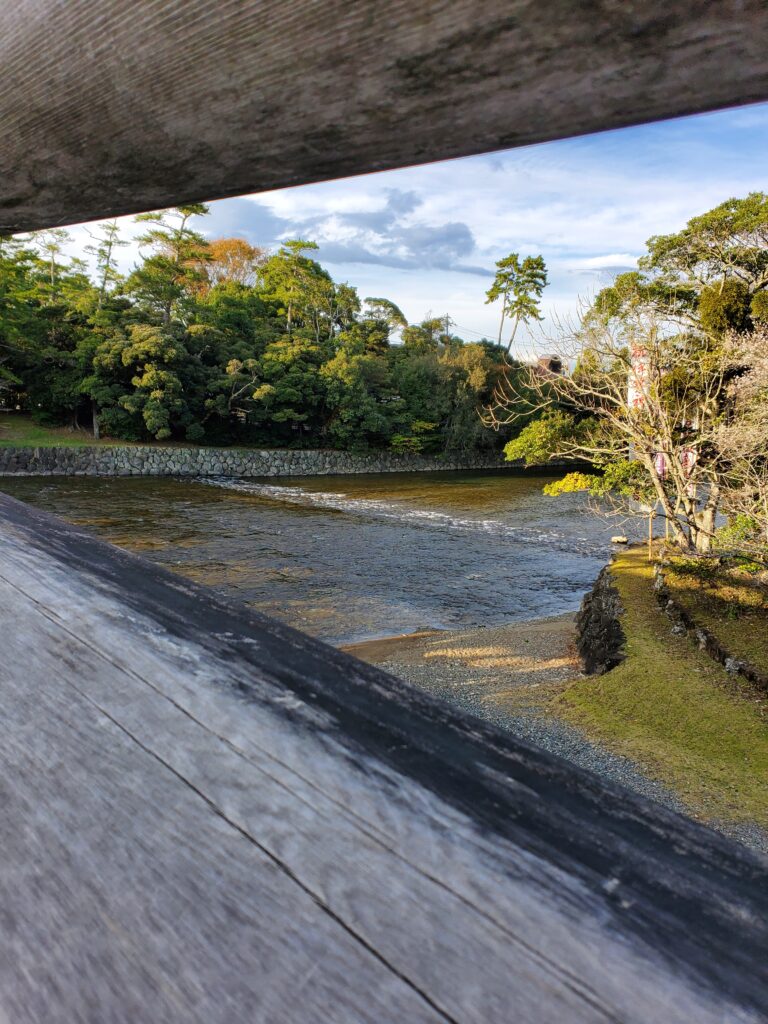
At the Misogi-bashi (purification area) of the Isuzu River, I washed my hands, a ritual of cleansing.
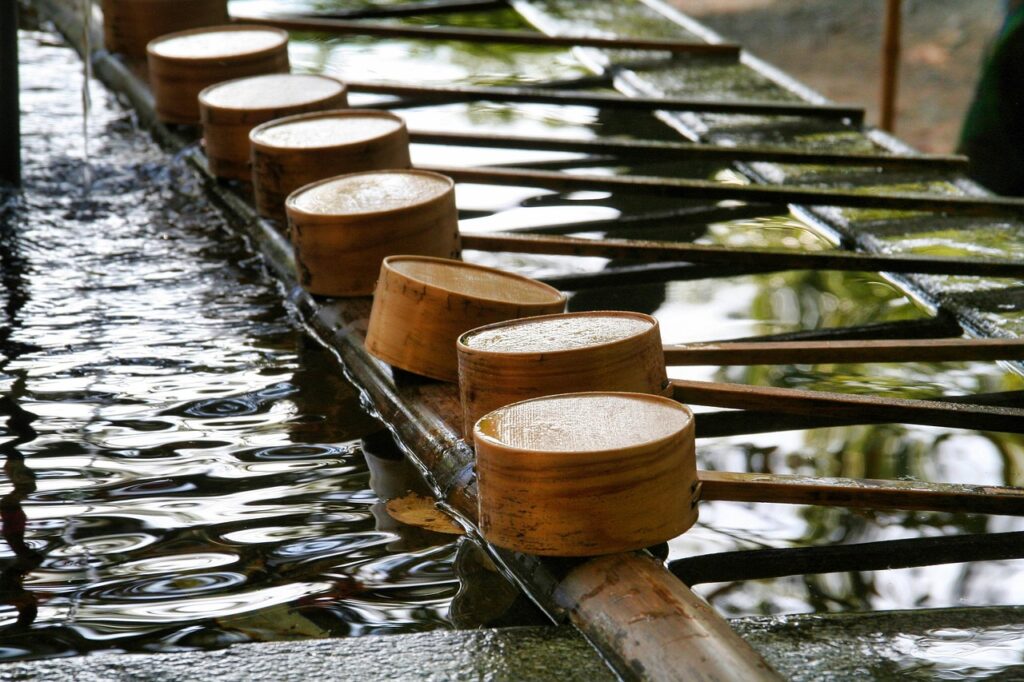
As I continued along the path, I found myself stopping at a stone step and sitting down to listen to the river’s song.
At that very moment, a young man standing nearby turned to me.
“It’s beautiful, isn’t it? The sound of the river.”
He looked to be in his mid-thirties, with neatly cropped black hair and a deep blue haori jacket. His gentle smile carried a quiet depth.
“Yes, truly,” I replied. “It’s like music composed by nature itself.”
He sat down beside me. His name was Daichi. Born in Ise, he had once worked at an advertising firm in Tokyo, but left that life behind to return home, where he now works as a guide and runs a small design studio.
“It wasn’t until I came back that I realized—convenience alone doesn’t fulfill us,” he said, gazing into the water.
“In Tokyo, I was always chasing numbers and speed. But since returning to Ise, I’ve started breathing again—hearing the morning river, feeling the birdsong at dusk.”
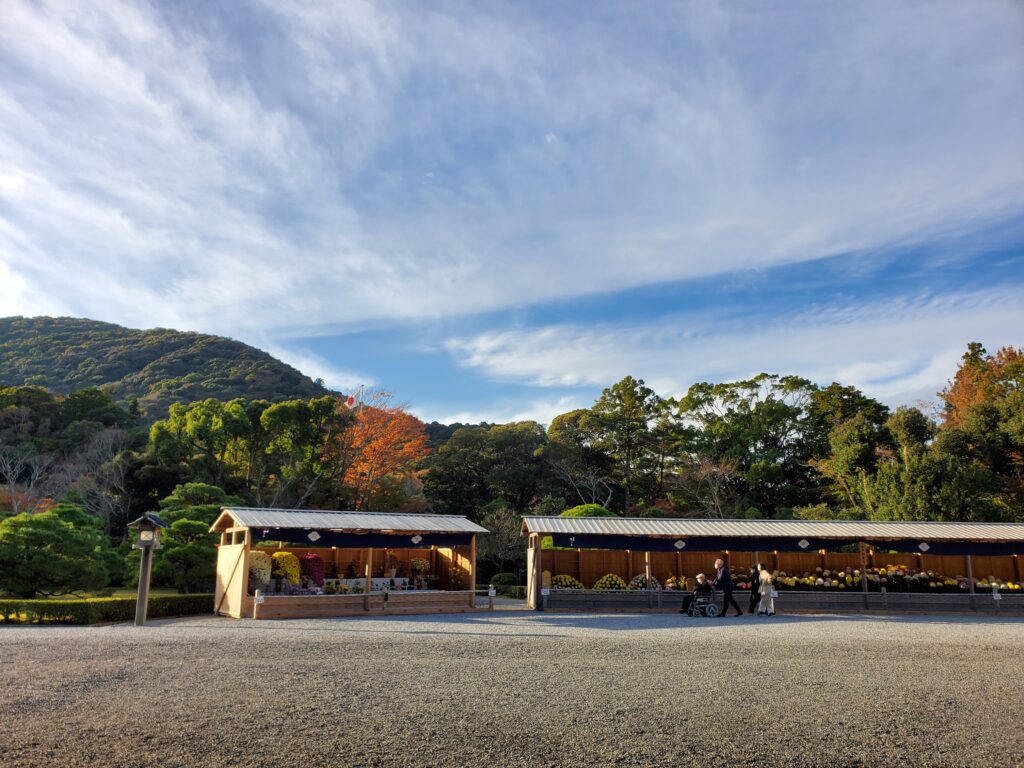
His words stirred something quiet within me. Maybe I, too, had been swept up in schedules and noise, forgetting to listen to my own voice.
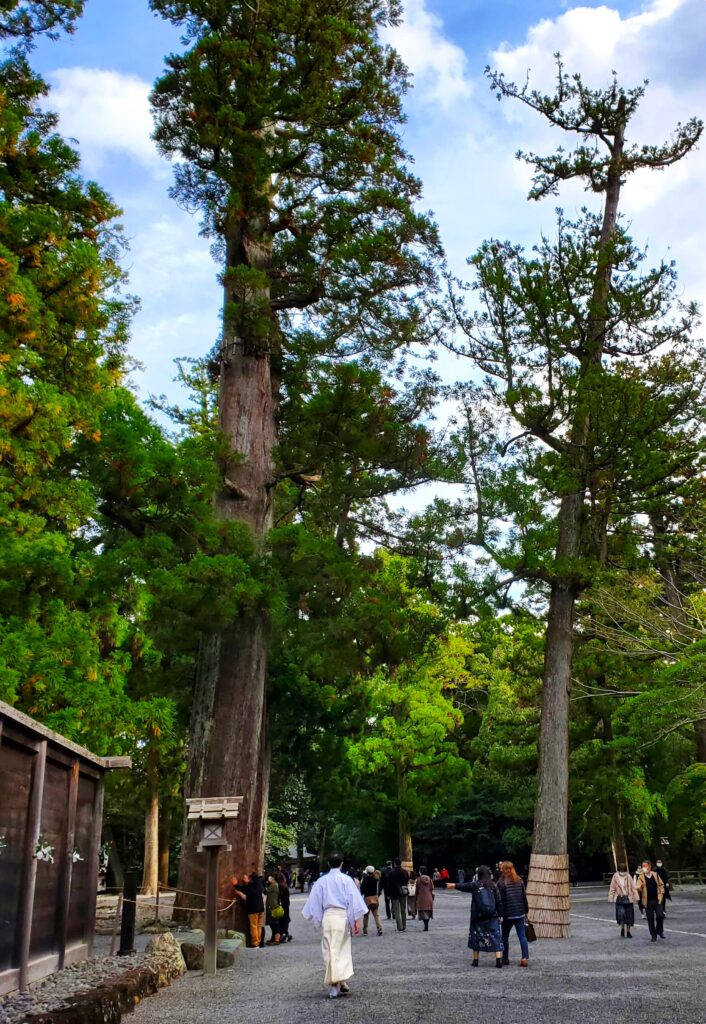
At midday, on Daichi’s recommendation, I headed to Oharaimachi, the old-fashioned town that stretches along the approach to Naikū. Wooden buildings lined the street, echoing the Edo period with their lattice windows and low eaves. The sounds of laughter, children buying sweets, and the scent of freshly grilled treats filled the air, settling gently into my senses.
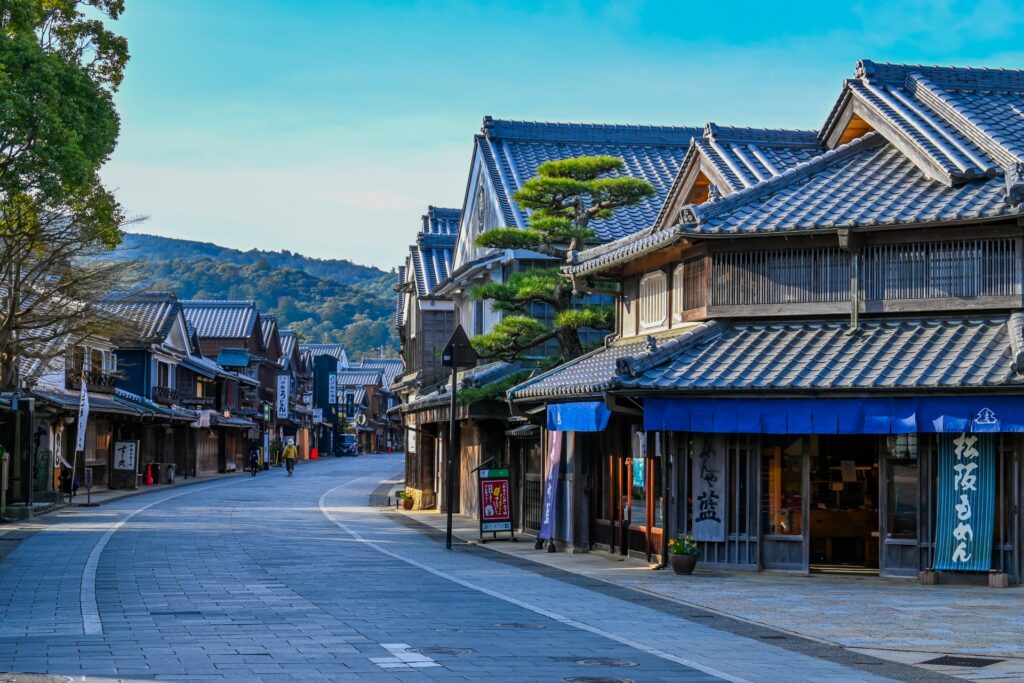
One small shop drew me in. Soft light filtered through the lattice, and the wooden floor creaked underfoot, evoking a sense of nostalgia. I ordered Ise udon—thick, soft noodles served in a rich tamari soy sauce. It looked simple, but the first bite was astonishingly tender, with the aroma of dashi rising warmly to meet me.
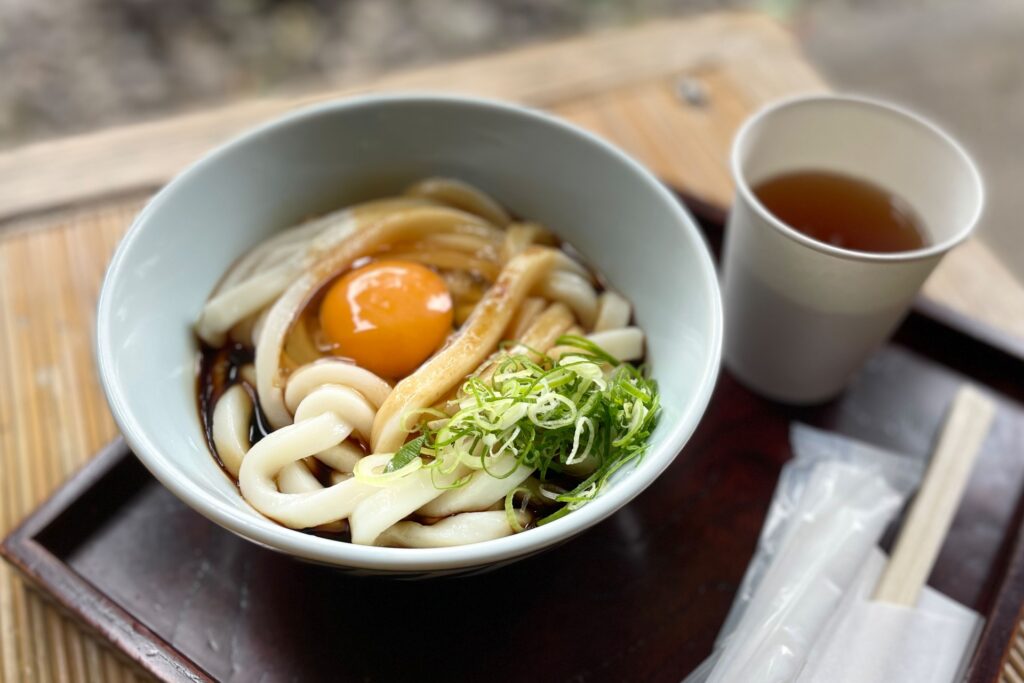
“It’s the kind of udon that makes time stand still,” I said without thinking. An elderly couple at the next table smiled.
After lunch, I visited a tiny sweets shop tucked away in the same town and tried akafuku, a local delicacy with over 300 years of history. It’s a soft rice cake wrapped in smooth red bean paste—gently sweet, deeply nostalgic, evoking the spirit of Edo Japan.
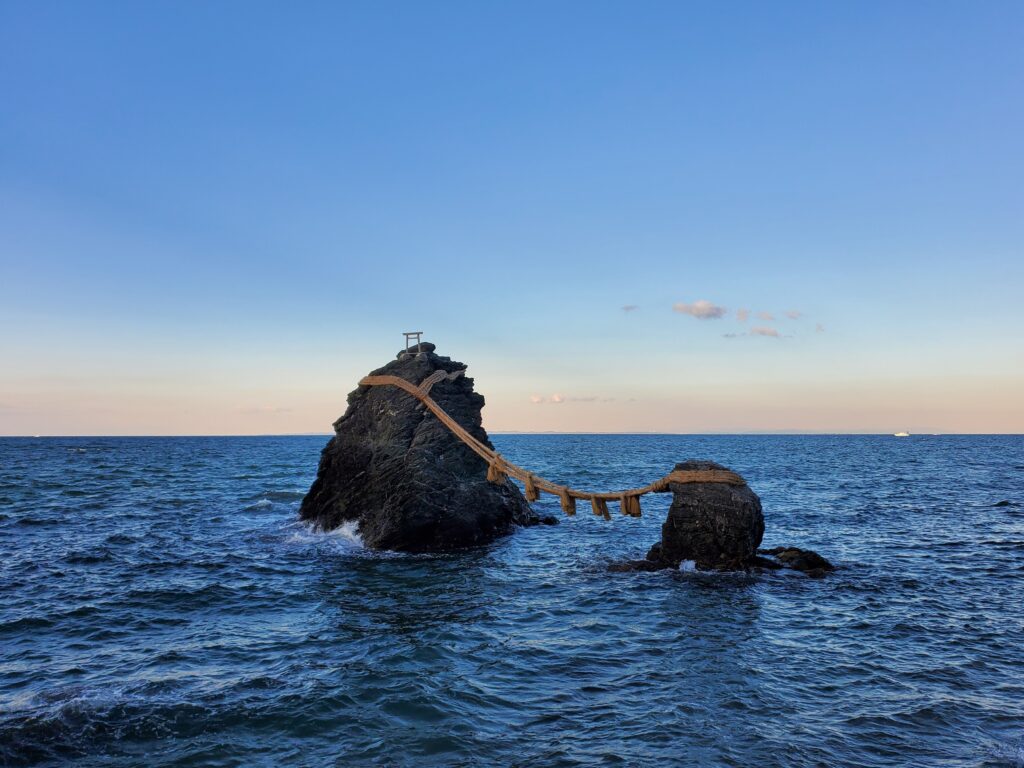
There’s more to see in Ise beyond the shrines. Not far from the Jingu, I visited Meoto Iwa, the “Married Couple Rocks.” Two sea-bound stones bound together by a sacred rope, they symbolize the bond of love and marriage.As the sun began to dip toward the horizon and the sky melted into shades of pale blue and soft amber, the light passing between the rocks felt like the arrival of something sacred.
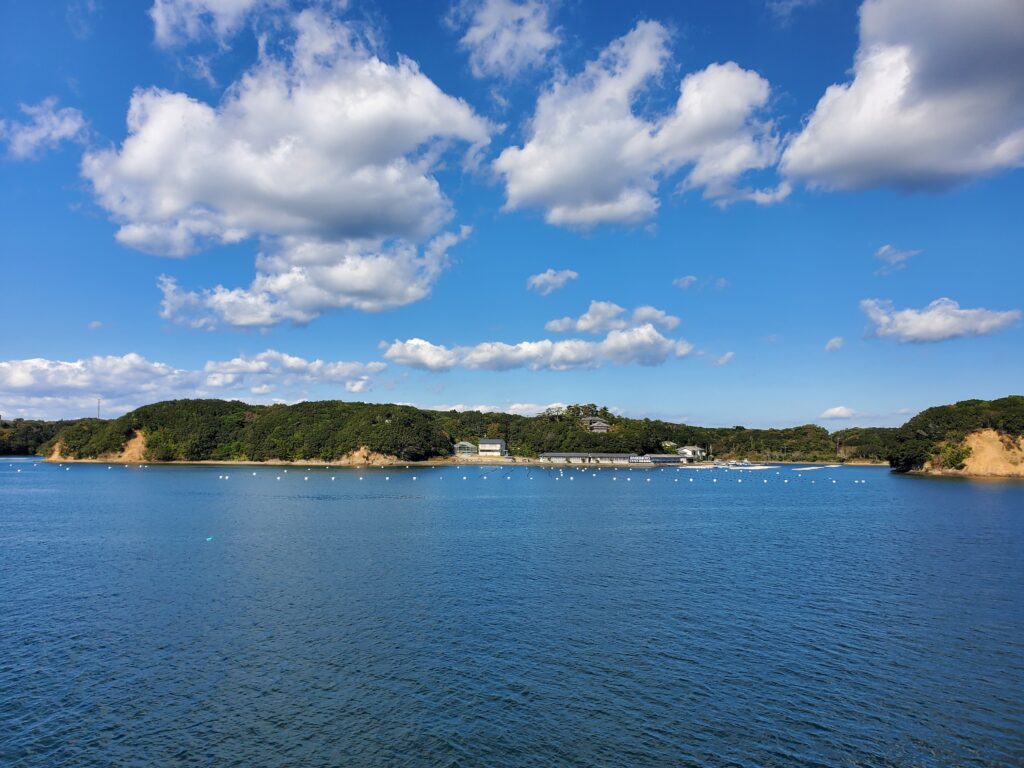
Later, I also visited Mikimoto Pearl Island in Toba, known as the birthplace of the world’s first cultured pearls. After learning about its history, I boarded a small cruise boat that sailed across the calm waters of Pearl Bay. The sea breeze was refreshing, and as it brushed against my face, it felt as if the wind itself carried a quiet kind of peace.
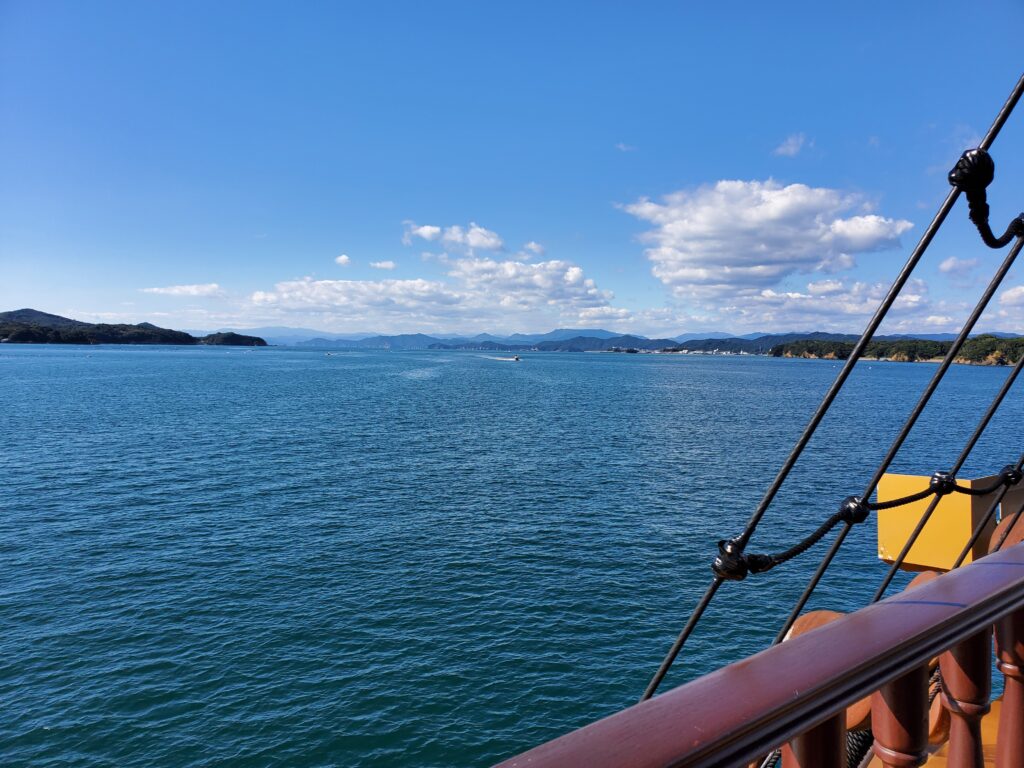
On the train ride home, I closed my eyes and remembered the sound of the Isuzu River. The sound of the water had spoken no words, and yet it had echoed for thousands—perhaps tens of thousands—of years. It held a beauty so profound, so impossibly pure, that no human hand could ever have created it. The more I listened, the more deeply it seemed to settle within me—as if, in its quiet persistence, it had been trying to teach me something essential.
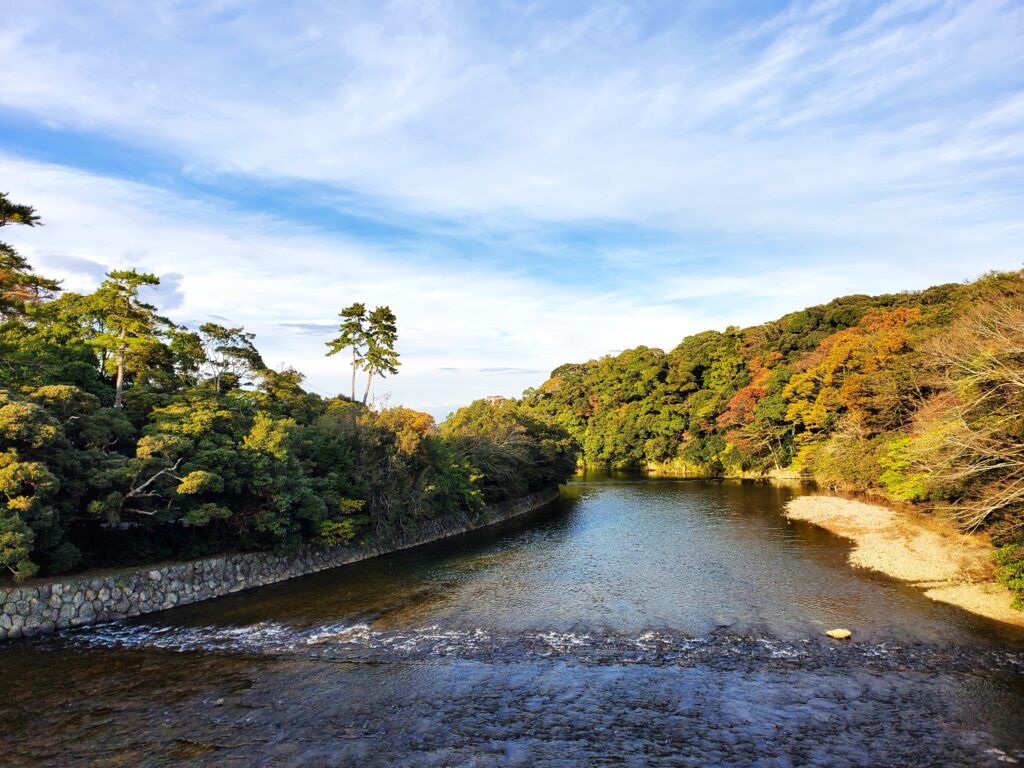
To listen. Quietly. To the voices of those beside you, to the wind, and to the subtle ripple of your own heart.
Perhaps travel isn’t really about going far.
Perhaps it’s about drawing closer to yourself.
The forest and the river of Ise whispered that truth to me.
Something New Travel

